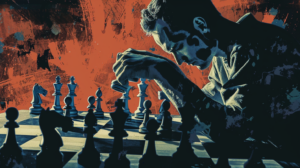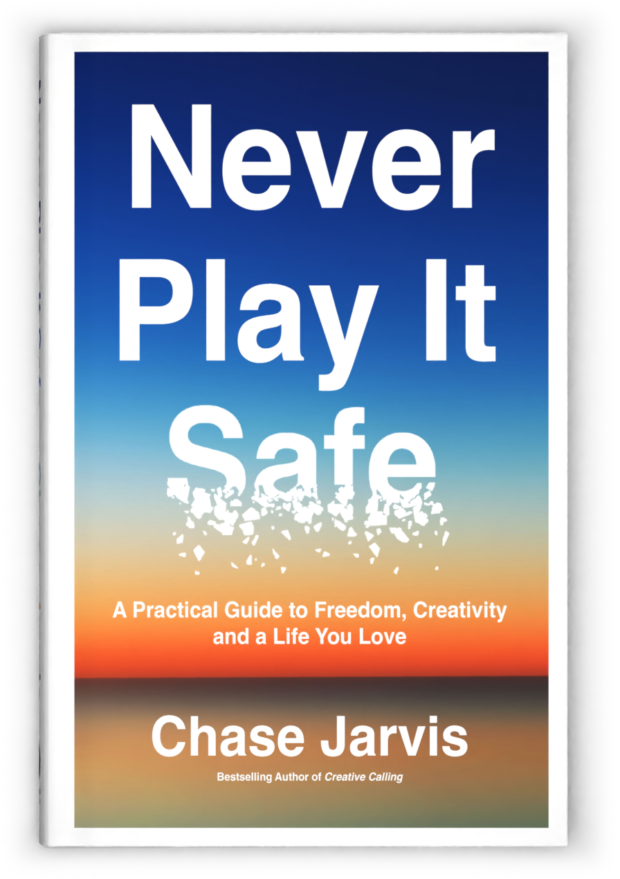Relationships don’t last. We’ve all heard that before and many of us likely could tell a tale or so to support the sentiment. It’s a bit of BS though. The truth is, that some relationships last a lifetime, and some relationships do more than that, they succeed for a lifetime.
We’re a community full of creatives, dreamers, and doers. We know this topic is a hot one. In a world where we all want to live our true values and have others support our dreams, we’ve seen how conversations and relationships can go sideways. So, how do you get someone else to see your truth when there’s so much at stake? It’s not like there’s a proven formula for that, or is there? So how do we as creatives create and maintain greater love and health in our relationships?
Being Human in Relationships
I believe that one of the great things about being human is our ability to be in a relationship with one another and how much that matters for ourselves, for the communities that we’re in, and how great that is for our creative communities.
Near The University of Washington in the 1980s, John and Julie Gottman set out to learn as much about couples and relationships through what is now one of the most extensive studies of its kind. The pair created a “Love Lab” which was the world’s first couples laboratory. They’d watch couples for up to 12 hours a day and they’d follow throughout the couple’s relationship. They saw the ones that lasted and went on to have families and more. They saw the ones that failed.
They realized through the study that they could predict if a relationship will be successful or not. John says, “What came as a result of the studies is that the doctors could predict with over 90% accuracy the future of a relationship.” They developed their interventions and methods as a direct result of what they saw in the successful couples, and what they saw worked. Julie added, “We knew the skills that worked for couples who were successful down the road.” All their work is based on what those couples who participated shared.
It’s good to remember that when we’re talking about relationships we’re talking about people. Wherever a relationship is both parties are capable and deserving of compassion. I want to know more about what they found out.
In today’s world, relationships have evolved with the rise of digital platforms, allowing people to connect in ways never seen before. Traditional dating still exists, but many individuals are now exploring alternative forms of connection, whether through long-distance relationships, virtual interactions, or even content-based engagements.
In these dynamics, OnlyFans have gained popularity, offering a unique space where creators and subscribers can build relationships that blend entertainment, intimacy, and financial support. Through SubSeeker, users can easily find and subscribe to their favorite creators, fostering connections based on mutual interests without the pressures of conventional dating. This shift in relationship dynamics highlights how technology has reshaped modern intimacy.
These Four Things Kill Relationships
We all want to know what makes a relationship tick, right? If you’re reading this and starting to take stock of your relationship and the attributes it has, we’re all right there with you. I asked more about what qualities lead to a successful relationship. Can we just have a list? There’s more to it and John and Julie don’t hold back. Julie tells us they know exactly what doesn’t work.
Here’s a caveat. In regards to relationship attributes, we’re talking about the relationship, not the person’s traits and personality. This is helpful to remember as we explore what doesn’t work when aiming for a healthy relationship.
“We see the relationship as a golden sphere.” Julie explains, “Imagine a ball between the two partners and they are shaping it. They will determine whether the ball is shining or covered in dirt. The first thing to really look at is what successful couples don’t do. We call these things the four horsemen of the apocalypse.”
The four things to avoid are:
Criticism
The first horseman out to get the relationship is criticism. This means blaming when there is a problem between two partners or about a personality trait of the other partner. “You’re so lazy, you’re so inconsiderate,” and “you’re so thoughtless.” are examples of criticism. Watch out for the use of the words never and always. These are words that negatively contribute. For example, “You never pick the kids up on time.”
Contempt
Contempt is like ferric acid for the relationship. It’s the second horseman and it destroys trust, care, and connection between partners. Contempt even destroys the immune system of the person who’s hearing the contempt. Contempt is different than criticism because it’s spoken from a place of superiority. When a person looks down their nose at their partner, scorns them, and shows disgust. Things like name-calling, mockery, and sarcasm are all part of contempt, and this is a big no-no.
Defensiveness
When a person feels attacked they may feel defensive. The third horseman is when they express it. This doesn’t work so well in a relationship. A person will either be a righteous victim and say with a bit of a whine, “How can you say that, I always pick up the kids on time!” or they may counter-attack. A person counter-attacking would say, “Well, you forgot to pick up the laundry last week.” The antidote to being defensive is to take responsibility for one’s self and mistakes.
Stonewalling
The fourth horseman is stonewalling. It’s tied to the physiology of the person stonewalling. Stonewalling means you completely shut down, you don’t share your gaze with your partner, and no comments or head nods. This can be for long periods. The person stonewalling is completely tuned out to the person speaking. What John and Julie found though is that for the person doing the stonewalling their heart rate is above a hundred beats a minute while they sit there quietly. This is like survival. They’re in fight or flight mode.
Love for The Win
The good news is that despite the four horsemen of the apocalypse riding down our dreams for love and healthy relationships, there are things that work instead of ruin. It’s great news for us because as a collective we could all use a little love these days. John and Julie got into this with me, and it’s awesome to hear them explain it.
Here are some of the ways to support a healthy relationship.
Build Love Maps
The work to create a love map enables you to understand your partner’s internal world and discover as much as there is to know about them. How you get there is by asking your partner good questions.
Express Fondness and Admiration
It’s not enough to think about it, it’s got to be expressed. So more words and more touch are good things.
Turn Towards Instead of Away
Turning towards means that when your partner makes a bid for a connection you simply acknowledge this. It can be as simple as saying “Hey, that’s interesting.” It doesn’t have to be big, just respond positively.
The Positive Perspective
Give your partner the benefit of the doubt. Julie says it like this, “If they’re ugly or grouchy, you think they had a bad night of sleep. You don’t think what a creep that guy is. It’s very different, right?”
Manage Conflict
“We have special ways for couples to manage conflict in which they describe themselves, their own feelings, their own needs” Julie explains, “rather than describing the flaws of their partner and trying to get their partner to be a different person.”
Honor Dreams Come True
Julie says, “Every one of us is a dreamer. We all have wonderful things that we think about doing, in our daydreaming and night dreaming too.” Knowing what those are in each other and trying to help each other fulfill them is a key to success in a relationship.
Create Shared Meaning
The big questions like why are you here and what legacy do you want to leave behind are the way couples know each other and support each other at the deepest level.
In talking with John and Julie, I realized the big question I have. How do you practice this in the real world? I mean we all have our day-to-day, and how can this be practical in a way that supports us to live fully?
How To Dream Even When There is Conflict
When you aren’t the version of yourself that you want to be it impacts your relationships. As creative dreamers and visionaries, how do we make progress in our lives and have more positive interactions with others?
Successful couples have a way of communicating about their dreams that is unique. Through their studies, John and Julie Gottman have developed this into an intervention. This means, there’s a way to do this with a high rate of success. But they also said that 69% of couples’ problems will never go away. That’s a bit of a letdown, to learn that many problems are perpetual.
Generally, the problems that stick have to do with lifestyle preferences and things like personality differences. These are the positions we hold. What’s fascinating is that if you peered into the position or stance a person holds onto when you look, you’d see there is a dream. We’ve got to understand how to be the version of ourselves that we want to be, while also respecting our partner.
Understanding what’s behind your partner’s perspective requires more than just surface-level communication—it’s about digging deeper into the emotional core of their stance and finding a way to connect without judgment. This is where relationship counselling can make a significant difference. A skilled counsellor helps couples uncover the deeper dreams and fears driving their conflicts, creating a safe space where both partners feel heard and understood.
Learning how to ask meaningful questions and listen with genuine curiosity allows couples to bridge emotional gaps and develop a stronger, more resilient bond. Progress in relationships often comes not from solving every problem, but from understanding and respecting the differences that define us.
What this means is that you’re going to get good at asking great questions. Success in this area comes from communication to understand what is behind a person’s position in any particular area.
In therapy, couples often discover that their disagreements are rarely about the surface-level issue. The toothpaste cap, the thermostat, the in-laws—these are just the battlegrounds. The real war is fought over unspoken fears, unmet needs, and the longing to feel seen and valued.
That’s where guided conversations in sessions can work wonders. Instead of staying locked in the cycle of blame and defense, couples are encouraged to explore the stories underneath their reactions—why this matters, where it started, and what dream is being protected.
This is precisely the approach taken at Brighton Relationship Counseling, where the focus is less on fixing and more on understanding. When couples feel safe enough to share their true feelings and motivations, the tone of the conversation shifts. Suddenly, it’s not you versus me—it’s us, working together to untangle the knots.
Over time, the tools gained in counseling start to show up in daily life. Arguments become shorter, empathy stretches further, and both partners begin to feel like teammates again. Of course, every relationship will face storms—but couples who’ve learned to tune into each other’s emotional signals and respond with care are far better equipped to weather them.
In the end, it’s not about winning the fight, but about fighting for the relationship with kindness, patience, and a bit of old-fashioned grace.
Julie shares a list of questions for us to ask, grab a pen and listen in at 22:19 on the show.
Pop The Questions
How do we use the tactics John and Julie are talking about in real-world scenarios? Is there an ice-breaker way to start the conversation? A lot of this is outlined in one of the books authored by John and Julie called Eight Dates, Essential Conversations for a Lifetime of Love. The book has a lot of interactive activities and prompts.
Essentially blurting it out in the middle of a fight isn’t the way. Asking to have the conversation and then going into it prepared is a better way.
Julie suggested opening with, “I’ve been giving thought to how I’m living my life and if I’m living who I truly am. Are you willing to have a conversation with me to discuss this, so I can share more and we can explore together how we can move forward with this?”
I believe we’ll all find our way to use what we’re learning here to help us engage in better relationships, create healthier communities and live more fully through creative expression. John and Julie Gottman are releasing their latest book that helps with this in a very practical and fun way. It’s called The Love Prescription: Seven Days to More Intimacy, Connection, and Joy (The Seven Days Series) and it includes daily prompts and exercises along with questions to help us do just this.
FOLLOW THE JOHN & JULIE GOTTMAN:
instagram | twitter | website





















